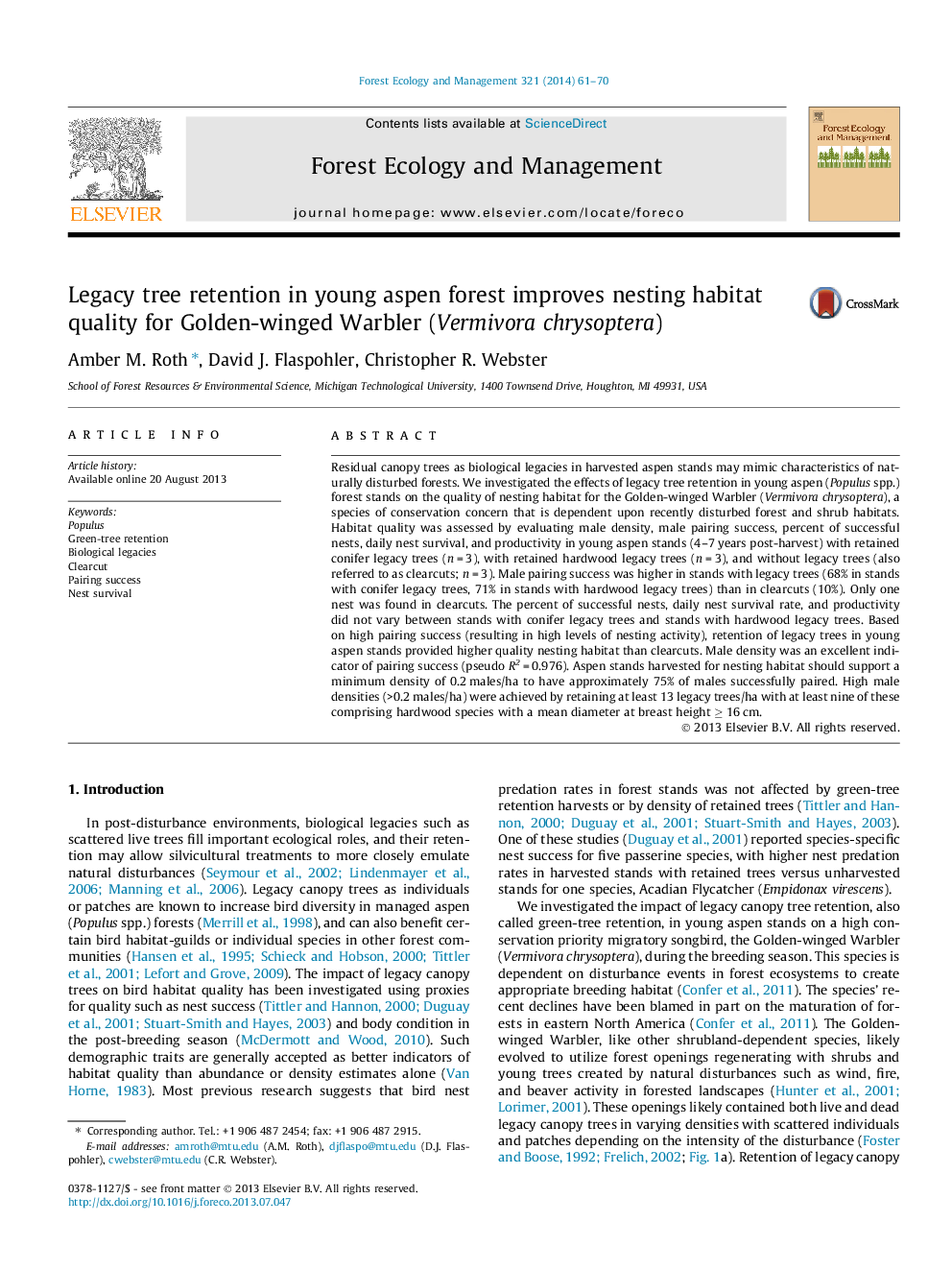| کد مقاله | کد نشریه | سال انتشار | مقاله انگلیسی | نسخه تمام متن |
|---|---|---|---|---|
| 86474 | 159191 | 2014 | 10 صفحه PDF | دانلود رایگان |

• High male pairing success indicated high nesting activity in young aspen forests.
• Most male Golden-winged Warblers were unpaired in clearcuts (no legacy tree retention).
• Male density was an excellent indicator of pairing success.
• High male densities were achieved by retaining hardwood trees ⩾16 cm in diameter.
Residual canopy trees as biological legacies in harvested aspen stands may mimic characteristics of naturally disturbed forests. We investigated the effects of legacy tree retention in young aspen (Populus spp.) forest stands on the quality of nesting habitat for the Golden-winged Warbler (Vermivora chrysoptera), a species of conservation concern that is dependent upon recently disturbed forest and shrub habitats. Habitat quality was assessed by evaluating male density, male pairing success, percent of successful nests, daily nest survival, and productivity in young aspen stands (4–7 years post-harvest) with retained conifer legacy trees (n = 3), with retained hardwood legacy trees (n = 3), and without legacy trees (also referred to as clearcuts; n = 3). Male pairing success was higher in stands with legacy trees (68% in stands with conifer legacy trees, 71% in stands with hardwood legacy trees) than in clearcuts (10%). Only one nest was found in clearcuts. The percent of successful nests, daily nest survival rate, and productivity did not vary between stands with conifer legacy trees and stands with hardwood legacy trees. Based on high pairing success (resulting in high levels of nesting activity), retention of legacy trees in young aspen stands provided higher quality nesting habitat than clearcuts. Male density was an excellent indicator of pairing success (pseudo R2 = 0.976). Aspen stands harvested for nesting habitat should support a minimum density of 0.2 males/ha to have approximately 75% of males successfully paired. High male densities (>0.2 males/ha) were achieved by retaining at least 13 legacy trees/ha with at least nine of these comprising hardwood species with a mean diameter at breast height ≥ 16 cm.
Journal: Forest Ecology and Management - Volume 321, 1 June 2014, Pages 61–70